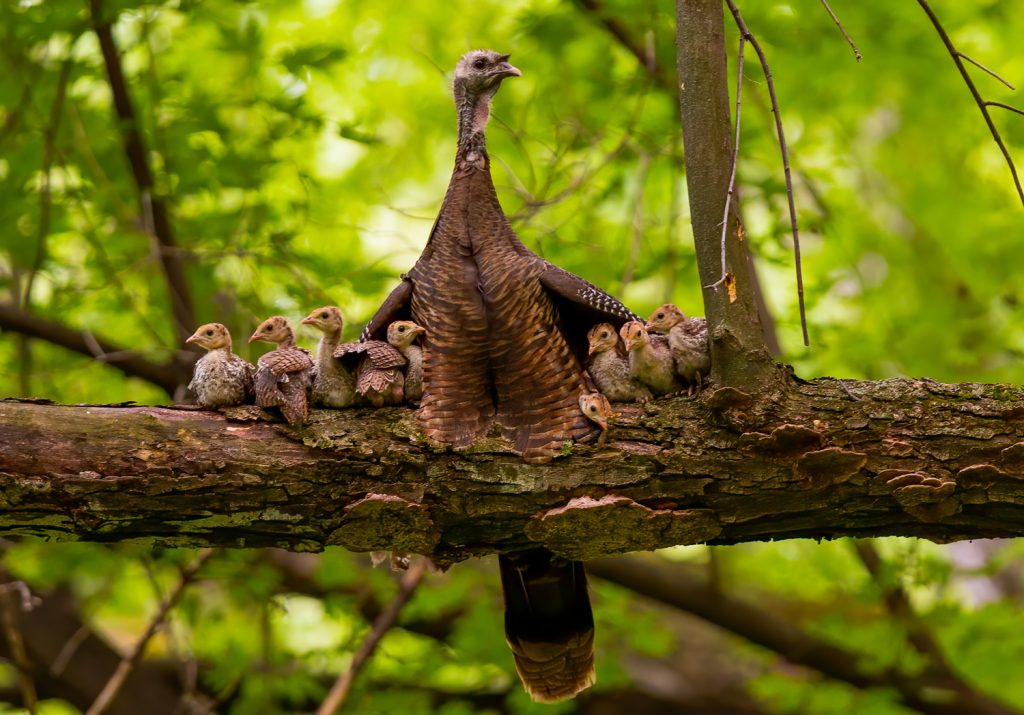Run for Cover
Create windbreaks, thermal cover and roosting areas to enhance wild turkey habitat.
About 30 years ago, I planted a five-tree-wide, 150-yard-long stretch of white pines on my property in southwest Virginia. Fifteen years later, that evergreen grove began serving as a roosting area for turkeys, plus providing thermal cover and a windbreak for deer, squirrels, mourning doves and a host of nongame species. In short, the planting is one of my most successful habitat improvement projects.
Travis Sumner, the NWTF’s Hunting Heritage Center and habitat manager, believes other evergreens are well suited for these purposes, too.
“Northern white, eastern red and southern red cedar provide good cover and wind protection,” Sumner said. “All are evergreen year-round and don’t lose their needles. The tree limbs are close together, which can provide a blanket effect from rain, cold and wind. These trees are easy to plant in long rows along edges of fields or open areas.”

Landowners can use cedar species to create hedgerows in the middle of open areas. Planting these trees close together in rows creates windbreaks that provide wildlife cover from the elements. Rows of at least three trees help provide stability and protect against wind damage.
Depending on where landowners live, other species to consider planting include Carolina and eastern hemlock, Frasier fir and white spruce. These evergreens sport thick needles that are key to providing wildlife thermal protection.
Long-term Solutions
For long-term solutions, landowners should consider hardwoods.
“If you are practicing any type of timber management, include streamside management zones in your plan,” Sumner said. “SMZs are areas generally made up of a variety of hardwood species that are perfect roost areas for turkeys. These SMZ areas are located near water, making them a key area for turkeys to roost. These areas should be untouched by any logging operations.”
Additional long-term solutions include managing existing hardwoods along ridgetops and planting new hardwoods, especially white and red oaks, along field edges and in bottom areas. These are ideal roost sites and acorns are always an excellent food source. Thin unwanted trees and maintain the older mature hardwoods. This can be done by chemical hack-and-squirt methods or with a chainsaw, Sumner said.
Hardwoods may require years to reach maturity, but the long-term wildlife benefits are worth it.
Quicker Solutions
Pines represent a relatively fast remedy to a lack of windbreaks, roosting and thermal areas.
“Pine stands do tend to grow quicker than hardwoods,” Sumner said. “Through proper timber management and rotational thinning, pine trees can reach heights that will be used by turkeys much quicker than hardwoods.”
The young pines can provide near immediate cover until they reach 10-15 years of age, at which time turkeys may begin considering them as acceptable roost sites.
